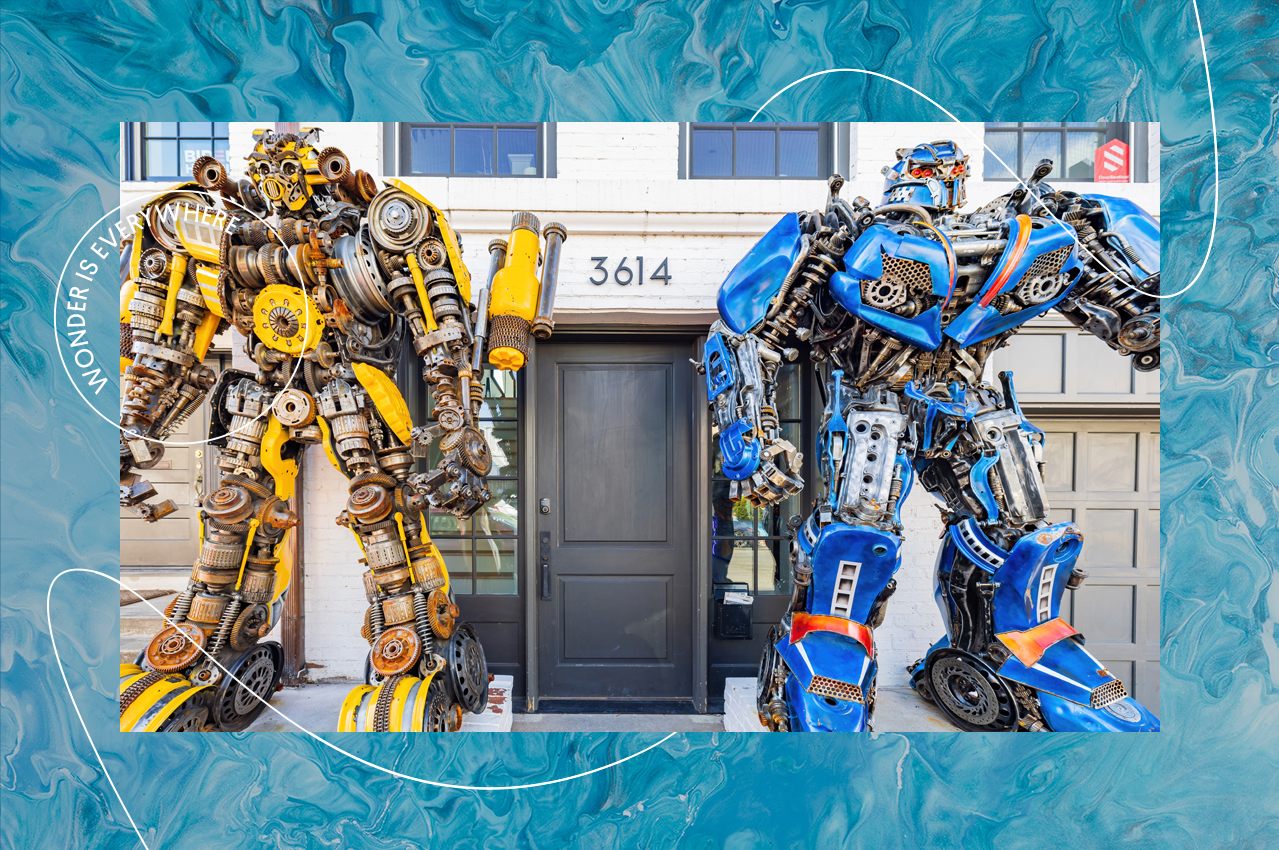Wonder Is Everywhere: A Fight Over Optimus Prime, the Richmond Rat Boy, and More From Around the Web
Get a peek into what we’re obsessed with right now.
Wonder is everywhere. That’s why, every other week, Atlas Obscura drags you down some of the rabbit holes we encounter as we search for our unusual stories. We highlight surprising finds, great writing, and inspiring stories from some of our favorite publications.

The Scientists Coaxing Back Nature with Sound
by Katherine Latham, BBC Future
Palmyra Atoll, in the middle of the Pacific Ocean, is a quiet place—too quiet. Eight vital species of seabirds disappeared from the island when it was overrun by rats. Now scientists hope to lure the birds back with a continuous soundtrack of familiar bird songs, one of many such efforts to use sound to restore the natural world. “Healthy island ecosystems are deafening,” Alex Wegmann, lead scientist for The Nature Conservancy, told BBC Future. “They’re so loud. There’s just constant persistent noise all the time.”
There’s More Than Meets the Eye in the Fight Over Two Transformers Statutes
by Noreen Malone, The New York Times
On Prospect Street in the staid Georgetown neighborhood in Washington, D.C., and you’ll find two 10-foot-tall metal statues honoring Bumblebee and Optimus Prime, the robotic heroes of the Transformers franchise. The statues—commissioned by a Georgetown professor to flank the door of his multimillion-dollar townhouse—have sparked a long-term fight over who and what belongs in the wealthy, historic neighborhood.
Chasing the Ivory-Billed Woodpecker
by Lindsay Liles, Garden & Gun
The U.S. Fish & Wildlife Service will soon decide if the ivory-billed woodpecker—also known by such fanciful names as the “Lazarus bird”—is extinct. Bird watchers like photographer Bobby Harrison, who has spent two decades trying to prove the Lazarus bird still lives in eastern Arkansas, and scientists collecting evidence of its existence in Louisiana, are trying to convince the government that the species is not yet lost.

What Is This “Piece of Terrible Taxidermy”?
by Sophie Goodall, Daily Mirror
The staff of the Wayne County Historical Museum in Richmond, Indiana, recently arrived at work to find the “Richmond Rat Boy,” a bizarre, desiccated mummy with a rat-like head and a humanoid body, outside its gates. No one yet knows where it came from—or why it was created in the first place.
Thousands of Stolen Artifacts Recovered
by Barbie Latza Nadeau and Amarachi Orie, CNN
Authorities in Italy seized 3,586 pieces of “inestimable historical, artistic and commercial value” and arrested 20 accused of being tombaroli—grave robbers—digging up treasure in Campania, Basilicata, and Puglia. Another 31 people are wanted in the archaeological heists.

You Too Can Own a Historic Lighthouse
by Teresa Nowakowski, Smithsonian Magazine
The General Services Administration is giving away 10 lighthouses—including the famed frozen Cleveland Harbor West Pierhead Lighthouse—that no longer meet the strategic needs of the U.S. Coast Guard. The only catch: You have to maintain the structure and open it to the public.
What a Tiny Stalagmite at a Tourist Attraction Can Tell Us About the Ice Age
by ScienceDaily
Amid the unusual and colorful rock formations of Cave of the Mounds, a roadside attraction in Wisconsin, this pinky-finger-length stalagmite is easy to overlook. But scientists who conducted a chemical and physical analysis of the rock, which formed over 20,000 years, say it is an invaluable record of climate changes in the last glacial period in the region, including a series of abrupt warming events.


























































Follow us on Twitter to get the latest on the world's hidden wonders.
Like us on Facebook to get the latest on the world's hidden wonders.
Follow us on Twitter Like us on Facebook